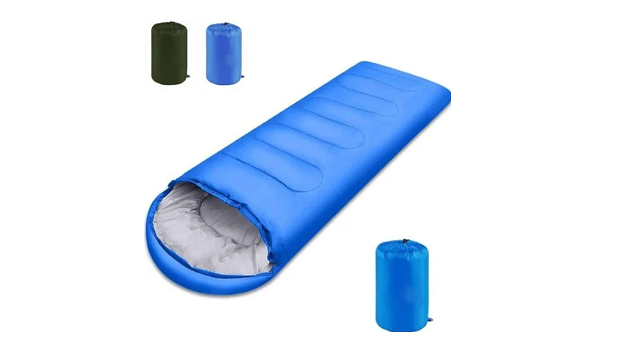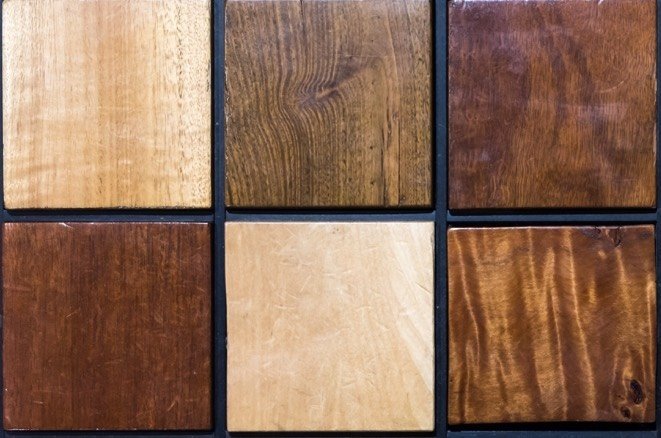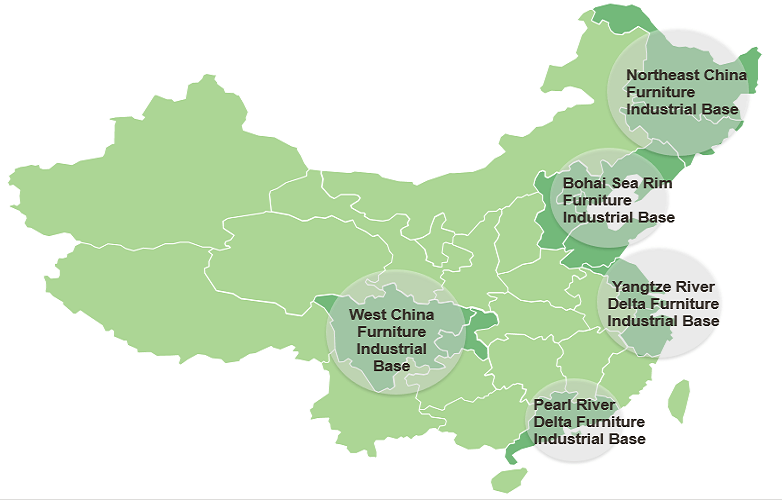How to Pick the Best Sleeping Bag from a Leading Manufacturer
The selection of sleeping bags may seem very challenging. At the end of this guide, you will be able to pick the right sleeping bag manufacturer that will supply you with the right products.
1. Introduction
2. Thick-It-Out – Consider Your Needs and Use
3. Understanding the Materials Used
4. Temperature Ratings
5. Size and Shape Matters
6. Fill Material
7. Shell Fabric
8. Weight and Packed Size
9. Features and Accessories
10. Manufacturing Process
11. Quality Control Standards
12. Testing and Certification
13. Finding a Reliable Chinese Manufacturer
14. Conclusion
1. Introduction
1. 1 The Role of Sleeping Bag
A good sleeping bag is one of the most essential pieces of gear for any outdoor adventure. A good sleeping bag serves as an insulator, comfort, and a shield against the wrath of Mother Nature and this is someone essential if you are in the wilderness.
1. 2 Why You Need the Best Sleeping Bag for Your Outdoor Game
If you are shopping for a sleeping bag, be sure to get one that will make your trip enjoyable. A good quality sleeping bag offers comfort through proper engineering of materials and design.
That reduces incidences associated with discomfort through cold spots that could be uncomfortable.
1.3 Benefits of Choosing a Sleeping Bag from a Chinese Manufacturer
First of all, there is a manufacturing industry already established in China. The industry has access to better technology and better quality materials, resulting in good quality sleeping bags for a worldwide standard price.
Chinese manufacturers specialize in the production of outdoor apparel and accessories due to their expertise. They can provide different designs for the apparel depending on the needs of the client, ranging from lightweight apparel for backpackers to heavily insulated apparel for winter trappings.
Major manufacturers of sleeping bags from China are equally capable of producing and shipping products to their customers anywhere in the world in record times.
Also, sleeping bag brands from China offer affordable prices without compromising the quality. Some of the Chinese manufacturers applied state of the art materials and technology to develop their sleeping bag products to be lightweight yet very warm.
Besides, most of the Chinese manufacturing companies are flexible. So, you can ask for certain features or tags that you prefer.
2. Thick-It-Out – Consider Your Needs and Use?
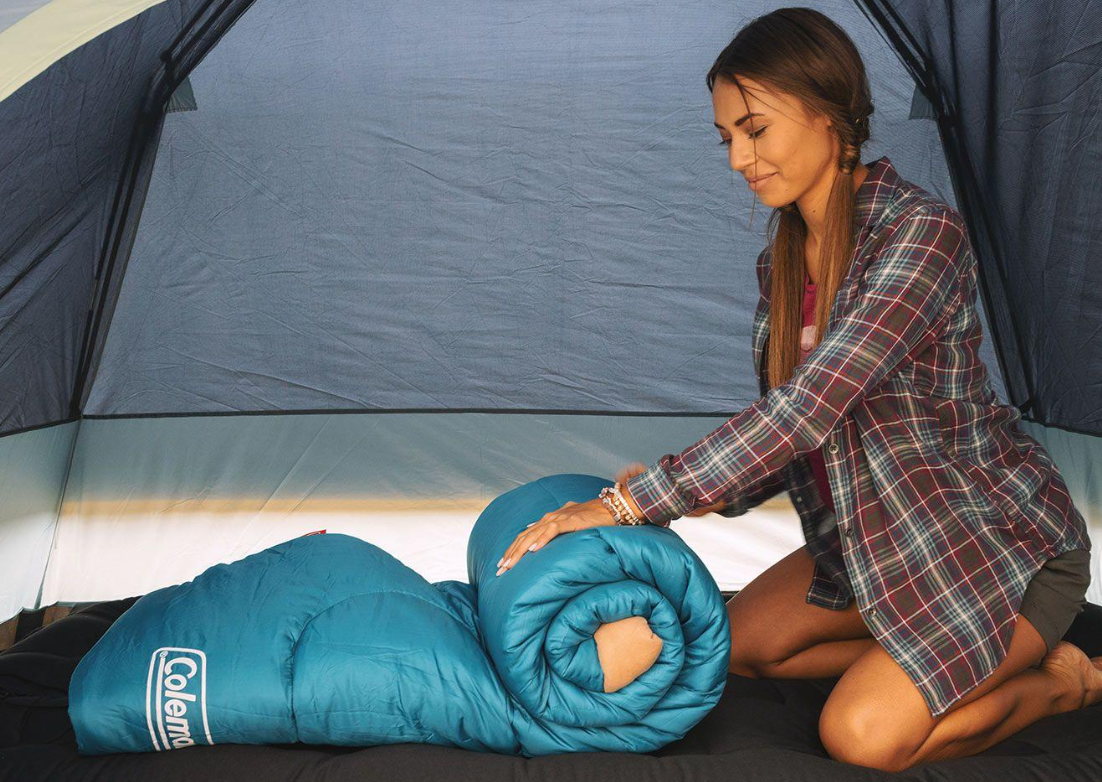
To select the most suitable high-quality sleeping bag from a Chinese manufacturer, it is vital to define the customer’s requirements and intended use of the product.
2. 1 Kind of Sleeping Bag Available
Although the sleeping bags from Chinese manufacturers are quite numerous, buyers should know of the available models:
Toddler Sleeping Bag
These are small-sized bags that are made for toddlers, whereby there is a focus on the safety of the baby. There is also the use of comfortable material to allow the baby to have a comfortable night’s sleep.
Kids Sleeping Bag
These are slightly bigger than the toddler sleeping bags. They feature basic safety and comfort aspects. As children grow, these bags provide more space to move in.
Adult Sleeping Bag
They come in different sizes and forms, mainly targeting the comfort of adults. They are available in lightweight and insulated bags depending on the activity they are going to be used for.
Backpacking Sleeping Bag
These are lightweight and relatively small in size to enable the packer to easily carry them during hikes. These usually incorporate insulation of great quality for warmth.
Double Sleeping Bag
The largest sleeping bags are designed for two persons. They are suitable for couples.
Camping Sleeping Bag
These bags are heavier and larger than their counterparts. They are used in car camping where transportation is not an issue. They are fashioned for comfort with warmth in mind.
Down Sleeping Bag
The cheapest bags are made from down feathers which makes the bags very warm since they are very light and perfect for use during the cold seasons.
Emergency Sleeping Bag
Small and frequently constructed from reflective fabrics, these are meant to be used in life-threatening conditions to sustain body heat so the colonist does not freeze to death.
Heated Sleeping Bag
Filled with down feathers, these bags offer excellent insulation and are lightweight, making them ideal for cold weather conditions.
Military Sleeping Bag
These sleeping bags are built for tough use. They are usually heavy duty with most models having a camouflage design. They are mainly preferred by military persons but can also be suitable for other types of adventurers who prefer rough terrains.
Dog Sleeping Bag
These are specifically for pet animals, especially dogs. They are designed to ensure that dogs can comfortably spend their time outside during a trip.
Cat Sleeping Bag
Similar to dog sleeping bags but designed with cats in mind, offering a cozy and secure space for your feline friend.
2.2 Temperature Ratings and How to Choose Based on Your Needs
Temperature ratings are among the most important things that one should look at when choosing a sleeping bag. They show the lowest temperature, with which an ordinary person could be warmed while using a sleeping bag. Here’s how to choose based on your needs:
Summer Bags
These can be rated for temperatures not lower than 32°F (0°C). Perfect for warmer months of camping or any use indoors.
Three-Season Bags
These are appropriate for spring, summer, and fall and are generally categorized as 20°F to 32°F (-6°C to 0°C).
Winter Bags
Crafted for winter use, these bags can withstand temperatures lower than 20F negative 6C, thus appropriate for cold, harsh climates.
Extreme Cold Bags
These bags are ideal for extreme conditions. They feature subzero ratings, sometimes up to negative forty degrees Fahrenheit (-40°C).
2.3 Considerations for different types of outdoor activities
Different outdoor activities require different types of sleeping bags, depending on factors like weight and insulation:
Hiking
For long-distance hiking, choose a very small and light sleeping bag. Unique down sleeping bags or other lightweight synthetic insulated will be good options with a high warmth to weight ratio.
Hikers should focus on flexibility. Choose a sleeping bag that is as small and as warm as possible. The general backpacking sleeping bags are meant to be used where long distances are traversed; as such, they are light and foldable.
3. Understanding the Materials Used?
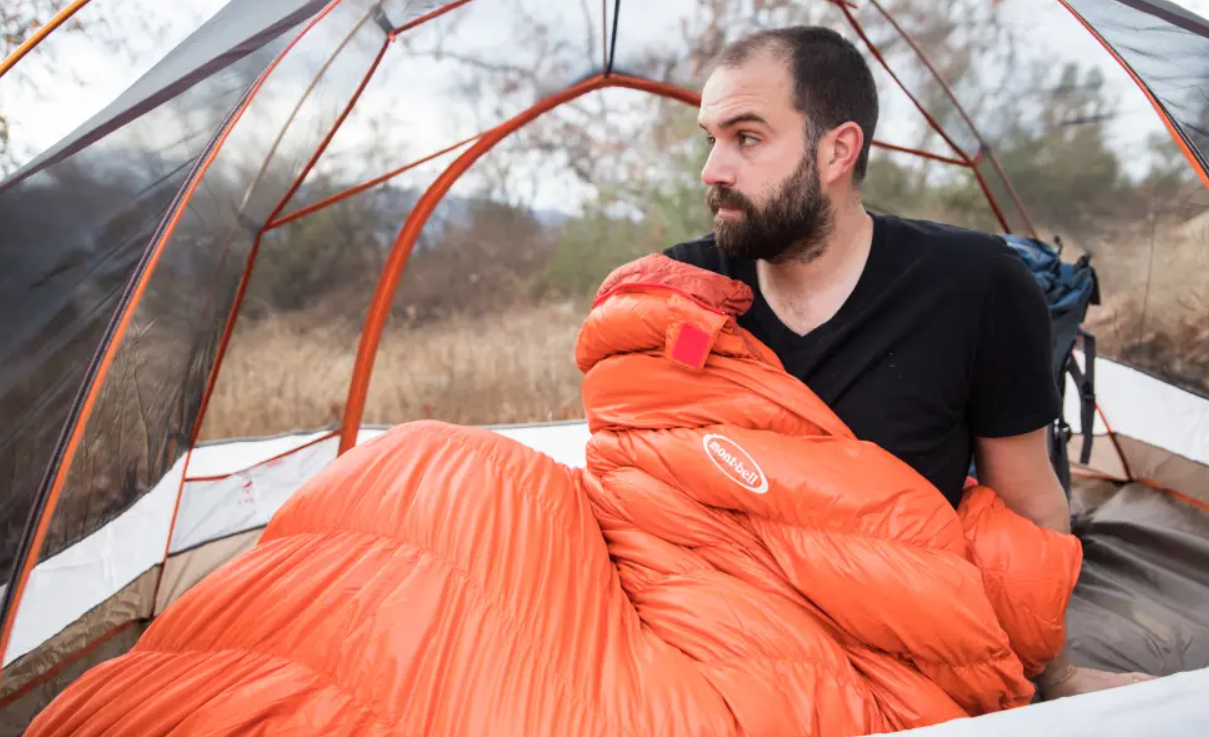
Many factors determine the effectiveness of a sleeping bag. These include the outer fabric, layering, insulation, shell, vestibule, weight, and packed size.
3.1 Common materials used for sleeping bags
Sleeping bags typically consist of three main components: the shell, the insulator or the jacket, and the lining. Here’s a breakdown of the common materials used for each:
Outer Shell Materials
• Nylon
A synthetic material that is heavy-duty yet very light in weight and generally comes with a water-repellent finish.
• Polyester
Still a little less stiff than nylon, polyester material is also water-resistant and more often used for the fabric of sleeping bags’ outer shells.
• Ripstop Nylon/Polyester
A stronger fabric than nylon or polyester that has an additional thread in the weave to reduce the chances of having a tear or a rip.
• Gore-Tex
A fabric used in high-class sleeping bags to minimize contact with water and, at the same, allow sweat to evaporate.
Insulation Materials
• Down
Duck or goose feathers, which are soft and fine by nature, are popularly known as down and are admired for their ability to hold warmth while still being lightweight and packable. Down is ideal for cold climates but doesn’t offer as much insulation to wet surfaces, which can be solved by using some sort of sealant.
• Synthetic Insulation
Normally derived from polyester fibers, synthetic insulations, for instance Primaloft or Thinsulate, tend to be cheaper than down, stay warm even when wet and dry quickly, hence suitable for wet climates.
• Wool
On rare occasions, wool is used in sleeping bags. Wool is a natural insulator that provides good warmth in wet conditions, too. Nevertheless, it is comparatively heavier and carries more volume than other materials available in the market.
Inner Lining Materials
• Polyester Taffeta
A gentle material used in the interior of sleeping bags. It is smooth on the skin, and one can easily dry with a few wipes.
• Cotton Flannel
A comfortable and soft material that is a bit denser. It does not dry as quickly, making it suitable for car camping.
3.2 Pros and cons of each material
Understanding the strengths and weaknesses of each material will help you make an informed choice based on your specific needs:
Nylon (Outer Shell)
Pros
• Nylon is lightweight
• They can endure rigorous usage while in the water and are also characterized by their water-resistant and quick-drying properties.
Cons
• Occasionally is considered to be less breathable than natural fiber materials.
Polyester (Outer Shell)
Pros
• Cheap and easy to clean.
• It cannot be penetrated by water.
Cons
• It is not as durable as nylon
• It could easily develop a tendency to hold smell for quite a long time.
Ripstop Nylon/Polyester (Outer Shell)
Pros
• Very strong and tear-proof and light in weight.
Cons
• Slightly weightier and a tad costlier than typical nylon or polyester material.
Gore-Tex (Outer Shell)
Pros
• These are flexible, dry, and quite shiny, making them waterproof and vapor permeable in addition to being extremely hard-wearing.
Cons
• It is expensive and heavy.
Down (Insulation)
Pros
• It has a great work-to-weight ratio, is highly compressible, and, as far as durability is concerned, it is excellent.
Cons
• It loses its insulating properties when it gets wet.
• It needs to be cleaned specially, and it is relatively costly.
Synthetic Insulation
Pros
• It retains warmth when wet, dries more often within a short time, and is inexpensive.
• It does not cause allergies.
Cons
• While it is heavier and bulkier, it is not as compressible as the down.
Wool (Insulation)
Pros
• It remains warm after being wet.
• It does not require being treated to avoid smelling and it decomposes naturally.
Cons
• They are wet and heavier, bulkier as compared to the natural systems and take longer time to dry.
Polyester Taffeta (Inner Lining)
Pros
• Non-slippery glides under the feet dries easily and does not cost much.
Cons
• It may feel a bit stifling and also may hold smell for a long time.
Nylon Taffeta (Inner Lining)
Pros
• It is durable.
• It is also comfortable and dries quickly.
Cons
• A little costlier as compared to polyester.
Cotton Flannel (Inner Lining)
Pros
• It is very soft, warm, and cozy.
Cons
• They are usually heavier and of a larger size, take longer time to dry, and are not well suited for wet weather.
3.3 How to Choose the Right Material for Your Needs
Choosing the right material for your sleeping bag depends on the specific conditions you expect to encounter and your personal preferences:
For Cold Weather
If you intend to use a sleeping bag in cold weather, then down insulation is preferable due to warmth and compactness. But if you expect wet conditions, then it will be better to use a synthetic insulated bag or a down bag having a waterproof outer layer.
For Lightweight and Compact Needs
For those who want to carry as little weight as possible yet still want insulation for the night, or if you’re backpacking or hiking, then a ripstop nylon shell with the down insulation is the best balance in terms of warmth-to-weight ratio and packability.
4. Temperature Ratings?
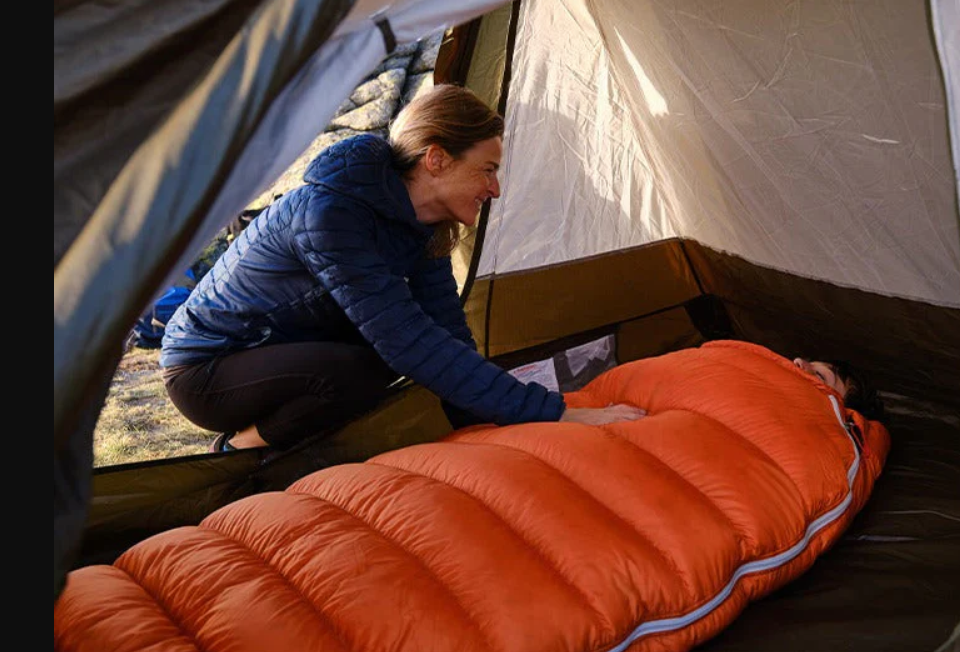
It is vital to look at the temperature ratings to know the performance of the sleeping bag in different situations. Familiarizing yourself with these ratings assists in acquiring the right sleeping bag that will boost your comfort and security while on outdoor activities.
4.1 What Temperature Ratings Mean
Temperature ratings show the lowest temperature that an average sleeper can expect to have a comfortable sleep in a specified sleeping bag. Different manufacturers may use different criteria to determine these ratings, but they generally fall into several categories:
Comfort Rating
The cool’s rise temperature gives the average sleeper a warm comfort by using several sleeping bags. This measurement is generally done when the subject is lying down in his or her usual comfortable sleeping position.
Limit Rating
The temperature at which the average person is safe from hypothermia if he/she is confined to a sleeping bag. This is mostly applied to people who sleep in curled positions.
Extreme Rating
The lowest temperature at which a sleeping bag will keep the average sleeper alive for a short period. This rating is intended for emergencies and not for regular use.
4.2 Understanding EN and ISO standards
Manufacturers apply different standards to maintain consistency and standards for temperature ratings. The two most common standards are:
• EN 13537
This European standard offers a comprehensive insight into the testing of sleeping bags.
• ISO 23537
While being defined as the update to EN 13537, ISO has slightly different temperature ratings, yet it has better test methods regarding the criteria as well.
4.3 Choosing the Right Temperature Rating for Your Needs
When selecting a sleeping bag, consider the following factors to choose the right temperature rating:
• Expected Conditions
When you are using a sleeping bag in a cold area, ensure that the sleeping bag you choose has a rating that is lower than the expected local temperature.
• Season and Climate
Ensure that the rating of the sleeping bag corresponds to the season and climate in which you are hiking:
• Summer
Bags rated for 32°F (0°C) and above are suitable for warm weather.
• Three-Season
For spring, summer, and autumn, bags with a rating of between 20°F and 32°F (-6°C to 0°C) are ideal.
• Winter
Bags with a rating of less than 20°F (-6°C) are recommended for winter camping and other cold-climate activities.
• Extreme Cold
For extreme cold, select a sleeping bag that is rated below (-29 C).
• Personal Comfort
Take into consideration your own opinion regarding the comfort for you and for sleeping. If you tend to feel cold then you may perhaps require a sleeping bag of a lesser temperature rating.
• Activity Level
Your activity level may determine how much warmth is required to keep you warm. For instance, if one is participating in, say, athletic activities that create body heat then a sleeping bag with a bit higher rating of cold might suffice.
5. Size and Shape Matters?
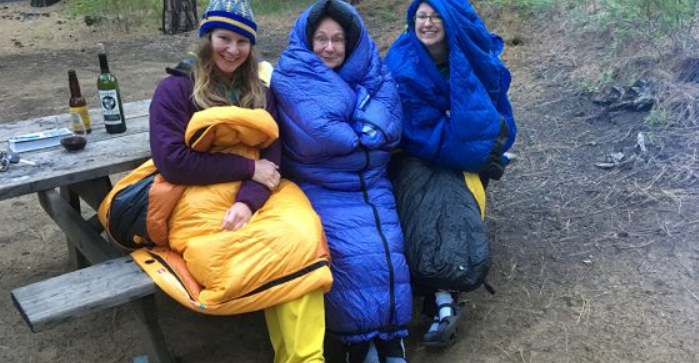
Choosing the right size and shape of a sleeping bag is crucial for ensuring comfort, warmth, and functionality during your outdoor adventures.
5.1 Importance of choosing the right size sleeping bag
Selecting the correct size sleeping bag is essential for maximizing comfort and warmth:
Comfort
When the sleeping bag you have is too large, you might end up losing heat because there is a lot of space for your body heat to come out. On the other hand, a small bag will be rather uncomfortable because it will seem like it is constricting the area around the abdominal organs.
Ease of Use
The dimensions of the bag should be optimal and easy to crawl into and out of. The dimensions should allow one to move around with great ease.
Packability
The size contributes to how small it can be compressed. The bigger the sleeping bag, the larger it becomes. When the size of a bag is well-fit, the compacting of the carrier will be easier, hence easy to carry and store.
5.2 Different Shapes Available
Sleeping bags come in various shapes, each designed to offer different benefits and suit various preferences:
Mummy
This shape narrows from the head part to the particular end well, conforms to the body contour, and has the least amount of space. It optimizes the amount of warmth retained because it is a poor conductor of heat. Further, it is easily compressible; hence, it can easily be packed.
Rectangular
A straight-sided shape that provides more room for movement and is often designed with more spacious interiors. It provides more ventilation, and additional space and is a better option for those campers who do not mind about weight and packing size much.
Semi-rectangular (or Barrel)
A satisfactory compromise solution to it is more like a blend between the mummy and rectangular shape to give extra space in a more tapered design.
Double (or Two-Person)
Intended for two persons, it is typically rectangular or semi-rectangular in shape. It is especially suitable for couples who wish to share a bed. Gives enough area and can be utilized in several circumstances or environments.
Hybrid
Combines features from different shapes, such as a mummy bag with a wider foot area or additional space in the shoulders.
5.3 Choosing the Right Shape for Your Body Type and Comfort
Selecting the right shape depends on your body type, sleeping habits, and the type of outdoor activity:
For Warmth and Efficiency
If you are concerned with warmth and planning on going on a backpacking or cold weather camping then a mummy sleeping bag is usually preferable because of its close-fitting design and excellent insulation.
For Comfort and Space
Those who want to have more space when sleeping and who do not camp in severe climates where warmth is paramount can take a rectangular or semi-rectangular sleeping bag. The bag has considerably more space and those who get a feeling of claustrophobia while inside a mummy bag will be more comfortable in this type of sleeping bag.
For Couples
If you are hiking along with your companion, then a double sleeping bag is perfect for you if both of you wish to sleep in the same bag.
6. Fill Material
The fill found in the sleeping bag is of extraordinary importance as it determines how warm, light, or efficient the bag will be. The two most used fill materials are down and synthetic. Both have their strengths and weaknesses and comparing these may assist when deciding what would suit the person’s requirements.
6. 1 Down opposed to Synthetic Fill
Down Fill
Downfall is made from the soft fluffs of fine feathers that are found on the undersegment of a duck or a goose. They are characterized by a high ratio of thermal conductivity- per density and compressibility.
Synthetic Fill
Synthetic fill is normally polyester fibers that imitate the insulating capability of true down. It is supposed to be warm even if the outer layer is damp and is usually cheaper than down.
6.2 Pros and Cons of Each
Down Fill
Pros:
• Down is warmer than feathers, lighter in weight, and better for such activities as backpacking and cold climate use.
• Down can be compressed to a smaller size, thus, making it easy for packing and porting around.
• If well taken care of and protected, the down sleeping bags should be able to last for many years while still providing the needed insulation.
Cons:
• Loses insulation when wet
• Higher Cost
Synthetic Fill
Pros:
• Synthetic fill can provide insulation after it has gotten wet; this property makes it suitable to be used in areas with high humidity, most especially in colder climates.
• Usually cheaper than down, and it makes it a great choice for most consumers due to the costs that are involved.
• It does not snag when used. It does not pile like down does. Besides, it’s very easy to clean and maintain.
Cons:
• Bulkier and heavier
• Less compressible
• Shorter lifespan
6.3 Factors That Affect the Insulation
Several factors influence the effectiveness of insulation in a sleeping bag:
Fill Power:
• Down
Fill power determines how deep down it is or how fluffy it is. A higher fill power means better insulation as well as better compressibility. Premium down has a fill power of 600 or higher. Although it will be more expensive, it will give you the warmth of down with a much lighter weight.
• Synthetic
Density and quality or introduction of fibers contribute to the insulation while fill power has very little contribution to the synthetic materials. Higher lofts among synthetics should be preferred for improved performance.
Fill Weight
• Down
High-fill weights can also be linked to added warmth. But the same warmth can be reached quite often with lesser weight in similarly high-class down sleeping bags.
• Synthetic
Synthetic fill operates at more amount of weight to offer the same warmth as provided by down. Therefore, the fill weight is a significant factor that determines the warmth and the size of the bag.
Bag Construction
• Baffle Design
The carefully selected components for the construction of the lower fabric or the shell, the baffle – the barrier that defines the location of the fill – all these have impacts on the fill’s insulation capabilities. This makes it easier to make the correct design of baffles to avoid cases of cold spots or improper distribution of the fill.
Shell and Lining Materials
• Shell Material
The shell fabric in the sleeping bag determines the extent to which the heat will be lost by the sleeping bag. An addition of a water-resistant or windproof covering will assist in retaining heat.
• Lining Material
The inner lining plays a role in the comfort, and it determines the amount of heat that is trapped. The smooth material used in the linings helps in providing comfort and increases heat dissipation to a very small extent.
External Factors
• Humidity and Moisture
Humidity and moisture pose a threat to insulation, especially the down kind. Synthetic fill boasts of being able to perform better under wet conditions than any other material.
7. Shell Fabric

The shell fabric of a sleeping bag is one of the most essential parts of construction. It determines the performance, durability, and comfort of the sleeping bag. The right shell fabric contributes to increased resistance to the exterior conditions, warmth, and durability of the bag.
7.1 Types of Shell Fabrics
There are several types of shell fabrics:
Nylon
Nylon is a generic lightweight Synthetic material offering strength and elasticity that is more often used in sleeping bag shells. Nylon is hard and, therefore, very resistant to abrasion, making it suitable for use in areas that are rough or harsh. At times, they are coated and painted with materials such as coatings to make them resistant to water.
Polyester
Polyester is another synthetic cloth type that is similar to nylon material but is cheaper than nylon fabric type.
They are odorless. They do not shrink and are cheaper than nylon fabrics. They are also water resistant and dry quickly. It also does not wrinkle or fade easily.
Ripstop Nylon
Ripstop nylon is a stronger material derived from nylon, which has additional lines of yarn that do not allow for the formation of rips and tears. It is of very high tensile strength and is highly resistant to abrasion and tearing. It is light and frequently used in superior-calibre sleeping bags.
Gore-Tex
The material has been specifically designed for use in a variety of demanding applications such as hiking, rock climbing, and mountaineering. The fabric is fully waterproof, fully windproof, and also highly breathable. It has an inner and an outer surface separated by another surface of fabric material.
Pertex
This is a type of fabric that is light in weight but tough enough to be used in the production of clothing intended to be used outdoors. It is waterproof and breathable.
7. 2 Waterproof vs. Water-Resistant
Understanding the difference between waterproof and water-resistant fabrics is vital for selecting the right sleeping bag for your needs:
Water-Resistant:
These are fabrics that are partially resistant to water, that is, not completely waterproof. While they may only avoid light rain or splashes, they can get wet when exposed for long hours.
Waterproof:
Waterproof fabrics possess a membrane or a coating whose main job is to avoid penetration of water. They are most reliable as they give a total shield from water and dampness. It is perfect for wet climates and severe weather. Provides insulation and warmth in in humid habitats.
7. 3 Durability and Breathability
When choosing shell fabric, consider both durability and breathability:
Durability
• Nylon and Ripstop Nylon
In general very resistant, which makes them even upgradable with ripstop to increase tear and abrasion resistance. Montage is perfect when the conditions are harsh and the usage intense.
• Polyester
It is not as wear-resistant as nylon but still provides fairly good protection from wear and tear. It is ideal for average everyday situations and not very hot environments.
• Gore-Tex and Pertex
Very robust Gore-Tex overlays for freezing/chaining weather added. Suitable for harsh environments.
Breathability
• Nylon and Polyester
Nylon is less breathable. However, polyester can be coated to attain higher moisture management than nylon.
• Gore-Tex
It is very breathable and also fully waterproof. That is vital as it eliminates the problem of condensation within the sleeping bag.
• Pertex
It is well known for its endurance, which is neither affected by the hot climate nor cold weather.
8. Weight and Packed Size?
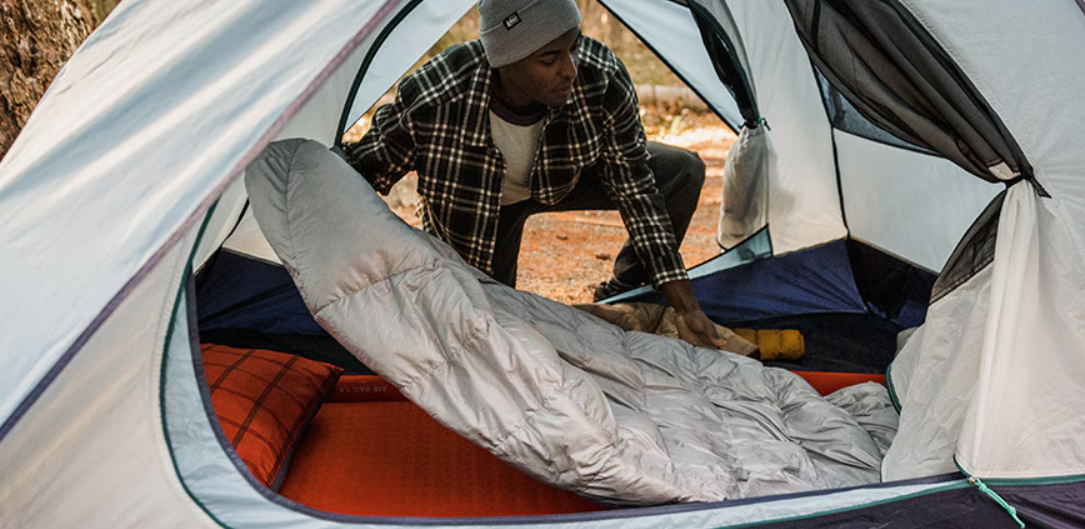
The weight and packed size of a sleeping bag are crucial factors to consider, especially for activities like backpacking and hiking, where space and weight are at a premium.
The trade-off of weight, warmth, and packed size is something that you should learn since all these attributes are interrelated, and they have corresponding impacts on the overall usability of the product
8.1 Balancing weight and warmth
When selecting a sleeping bag, it’s essential to find a balance between weight and warmth. Small sleeping bags are essential for occasions where every pound matters, for instance, backpacking or mountain climbing. It is normal to observe that the lighter bags are easily portable as opposed to the heavy ones.
That means that the fill material, size, and construction of a sleeping bag have an impact on its weight when it is packed. There is proof that down-sleeping bags are generally less weighty than synthetic ones –for the same warmness.
Warmth is essential for both comfort and survival, especially in chilly climates. Lack of sufficient insulation also means that using a particular sleeping bag may become uncomfortable and expose the user to hypothermia, especially when sleeping outdoors.
The level of warmth produced by a sleeping bag is a result of the insulation type, the fill weight, and the way it was constructed. Superior fill power down or more sophisticated synthetic down equivalents can provide additional warmth with less bulk.
Balancing Act
Better quality down sleeping bag typically affords a higher warmth-to-weight ratio, and this can be perfect for constricting climates because the smaller the sleeping bag, the less weight you get to carry.
For synthetic bags, it is advisable to use high-loft materials because they are relatively warm, even though they are heavy and bulky.
8.2 How to measure and compare packed size
Stuffed size is how small the sleeping bag can be made when stored or packed for transportation. Here’s how to measure and compare:
Measuring Packed Size
• Compression Sack
The vast majority of the sleeping bags are supplied and packed within a compression sack or a stuff sack. Take the dimensions of the sack when the sleeping bag is packed to know the size it will take when packed.
• Volume
Stowed size is always quantified in liters or cubic inches. Another thing to consider is the manufacturer’s recommendations with regard to the packed volume.
Comparing Packed Size
• Manufacturer Specifications
Make comparisons on the packed sizes mentioned in the descriptions of the products. Find information about the amount of volume that comes with the compression sack.
• Real-World Comparison
If possible, it is better to try to squeeze the packed size or read other people’s reviews to see how small a sleeping bag gets in reality.
8.3 Trade-offs between weight and packed size
Understanding the trade-offs between weight and packed size helps you make a choice that fits your needs:
Weight
Lighter sleeping bags are easy to carry, making them suitable for long travel. They help to shave off the total pack weight, which can increase comfort and maneuverability.
However, a reduction in their weight may be accompanied by the use of costly raw materials or even decreased insulation, which affects warmth.
Packed Size
This means that a smaller packed size enables you to reduce the amount of space taken by additional gear or simply take lesser overall bulk in your pack.
A packed size that is smaller may need to be compressed more, impacting the loft and insulation of the sleeping bag.
Down vs. Synthetic
Down bags, which are compressed at the bottom, can provide a higher warmth-to-weight ratio and have a smaller packed size than synthetic bags. Nonetheless, synthetic bags may be chosen with good reason in the case of bathroom use or simply if the buyer wants to save money.
9. Features and Accessories
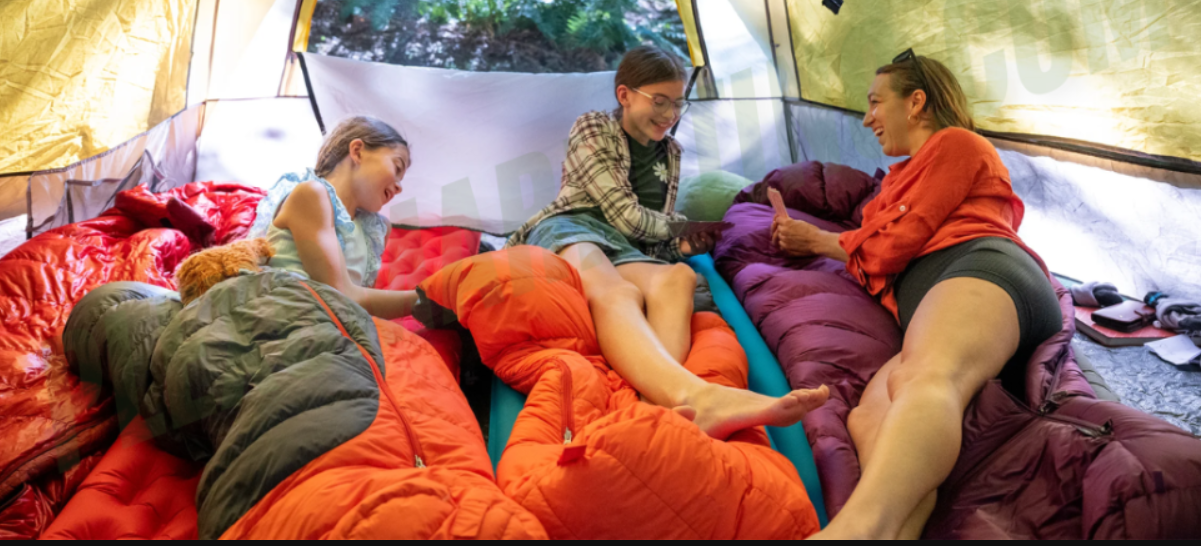
Some of the factors that make a sleeping bag extremely valuable include design aspects as well as other parts that are added to the sleeping bag. Here is a breakdown of key features to consider when choosing a sleeping bag:
9. 1 Hood and Collar
Hood
The hood is that part of the sleeping bag that covers the head of the wearer. It is intended to ensure that the body retains heat within it and, in the process, make the body warmer.
An adjustable hood should have cords that can be pulled to close around the face to avoid heat leakage. Some hoods have a drawcord or elastic band for securing a tight fit into the wearer’s head.
Collar
A collar, which is also called a draft collar or draft tube, is an insulation located around the neck and shoulders region.
The type of collar often used today is typically referred to as a draft collar. The collar is normally padded and can be easily adjustable to fit around your neck perfectly. It immensely assists in preventing the inflow of drafts and also assists in preventing heat loss.
9.2 Zipper and draft tube
Zipper
The zipper enables the user to gain access to the interior of the sleeping bag. It also regulates airflow.
Choose models with zippers that are slick and do not easily wear out and pull-forming hooks that catch the fabric.
Draft Tube
The draft tube is a tube of insulation near the zipper to avoid cold air flow through the zipper space.
A draft tube is normally filled with insulating material and is located between the top part of the bag and the bottom part. It may be stitched or directly attached to the garment.
9.3 Pockets and storage
Pockets
There are specialized pockets for your items within or outside the sleeping bag to avoid having to wake up during the night to search for such items as a phone or a flashlight.
Pockets are useful because they provide easy access to those small items that you occasionally need. They can also help keep your valuable things.
Storage
Think about what can be done with sleeping bags when they are not used and how they can be transported or stored.
To increase the durability and effectiveness of sleeping bags, they should be stored properly. To avoid situations where the insulation gets compressed or develops some other form of damage, the right sack or bag has to be used.
10. Manufacturing Process
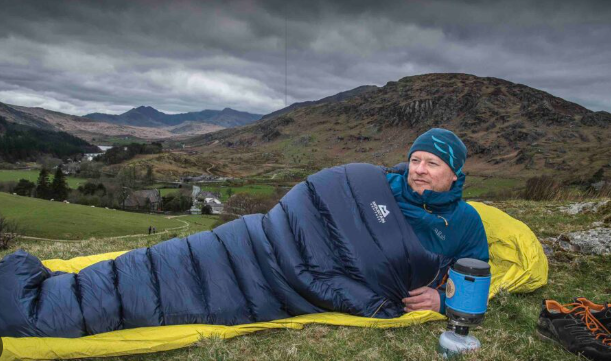
Understanding the manufacturing process of a sleeping bag is crucial for evaluating its quality, durability, and ethical impact. Here is a detailed look at the key aspects of the manufacturing process:
10. 1 Materials Sourcing
The manufacturing process begins with sourcing the right materials. Certain criteria of performance need to be met before selecting the fabrics. These are durability and water resistance.
Manufacturers must also source for fasteners. These include zippers, hoods, collars etc. They are obtained from specialty suppliers who deliver high-quality and guaranteed components.
10. 2 Quality Control
Products are checked for their quality before being used in the production process. This consists of a strength test, durability test, and performance test.
When manufacturing the garment the following quality control aspects are considered: stitching, seams, and insulation positions are quality control aspects observed. Visual and non-visual examinations are conducted to detect the abnormalities.
The final products of sleep bags also undergo some tests to determine their various performance, including thermal, durability, and water resistance tests. Some manufacturers may also do the testing in different conditions.
Check for such standards like ISO 9001 for quality management system or specialized industry standard that requires compliance to optimal standards.
Here are labels such as Responsible Down Standard (RDS) or Global Recycled Standard (GRS) means that the used material complies with ethical standards and is environmentally friendly.
10.3 Ethical and Environmental Considerations
Ethical Practices
Ensure that down is sourced from ethical sources, including RDS, which will ensure that birds were not plucked alive or that the birds were starved. It is also important to know whether the manufacturer complies with labor laws and guidelines regarding the rights of workers.
Environmental Impact
Select the items that have been recycled or those which have a low impact on the environment. It is essential for many manufacturers to gradually replace such materials as polyester with recycled ones and use others that can be considered ecologically friendly.
There are always companies who use environmentally sustainable strategies like using water-based dyes instead of chemical ones.
Think about how they will dispose of the sleeping bag or how the sleeping bag can be recycled. As for proper disposal, some brands have take-back programs. Some manufacturers have provided guidelines on how to dispose of them.
11. Quality Control Standards
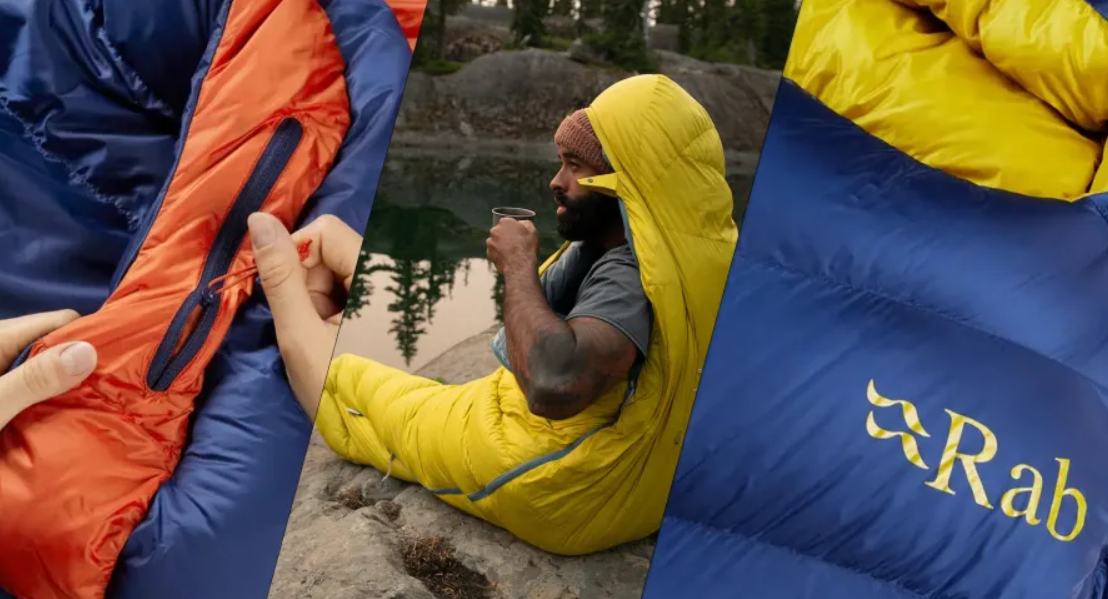
Quality control is critical in the manufacturing process to ensure that products meet specific standards of performance, safety, and durability. As for sleeping bags, it is critical to have high-quality control requirements to ensure the end product would provide comfort and functionality as advertised.
11.1 Importance of quality control in manufacturing
Ensures Product Performance
Quality control ensures that every sleeping bag has the right features the customers require, including insulation, sturdiness, and comfort, among others. The quality of the product, which is homogenous, assists in achieving improved customer satisfaction and reliability of the product.
Reduces Defects and Returns
Quality control assists in managing imperfections that may exist in the production procedure by pointing out the defects or problems that may be present in the manufactured products. This cuts down on the return rates and brings added satisfaction for the customers in general.
Safety and Compliance
Quality control measures guarantee product conformity to certain safety measures and standards concerning the usage of the product, eliminating safety hazards.
Enhances Brand Reputation
Conveying high quality enhances the consumers’ trust and helps the brand to gain a better reputation.
11.2 What to look for in a reputable manufacturer
Certifications and Standards
When choosing manufacturers, try to find the ones that have the ISO 9001 certificate, as it shows that the company is following the important standards for quality management.
Look for certifications that make sense for the clad, such as the Responsible Down Standard (RDS) or the Global Recycled Standard (GRS) for materials used.
Production Capabilities
Credible manufacturers use the latest equipment for production since this would enhance accuracy and speed when engineering the items.
To uphold high-quality control, it is vital to be dealing with trained and professional employees.
Quality Control Procedures
Check that the manufacturer implements stringent measures, especially in the testing and inspection processes in the manufacturing line. Companies that have their testing centers are also capable of running other intricate examinations that involve the product, like thermal efficiency or even endurance tests.
Customer Reviews and References
You should also try and find some feedback from customers of the manufacturer’s products and whether or not they practice effective quality control. Ask for recommendations from other clients or individuals who may have dealt directly with the manufacturer to know more about the manufacturer’s reputation.
11.3 How to verify a manufacturer’s quality control standards
Request Documentation
Request for written procedures that the manufacturer has established to be following to control the quality of the goods, that is, how and when the products are inspected and tested. It is worth to note down that any quality certifications claimed should be checked by the certifying bodies.
Visit the Facility
If possible, go out to where the product is being manufactured to access the quality check firsthand. This enables one to have a feel of the production environment and the practices in practice.
Concerning their quality assurance, ask if they have procedures for handling materials that fail to meet requisite standards.
Review Product Testing Reports
Ask for permission to join the sleeping bags’ testing reports in terms of their efficacy and non-hazardous nature. You should search for such aspects as insulation performance and its lifetime, longevity, and other characteristics.
Conduct Audits
Consider hiring third-party auditors or inspection agencies to evaluate the manufacturer’s quality assurance and conformity to certain criteria. The findings of the independent audits are, therefore, an objective assessment of the manufacturer’s conformity to the prescribed quality standards.
12. Testing and Certification
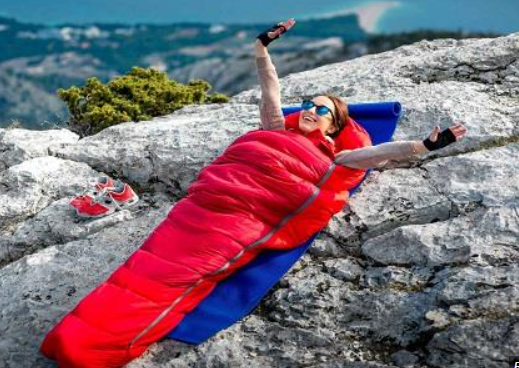
It is essential to test and get a sleeping bag certified to check on the ability of the sleeping bag to meet the standards of the given industry. They give certain proof of quality, safety, and reliability.
12.1 Third-party testing
Purpose of Third-Party Testing
Independent testing gives a genuine story of how the sleeping bag works and the quality that it has. Various products undergo analysis and testing from particular, neutral laboratories under specific established parameters.
It confirms the effectiveness of the sleeping bag as claimed by the manufacturer; insulation performance, durability, and level of comfort provided when in use.
Types of Tests
Some of the tests that can be conducted to determine the durability and wear characteristics of the fabrics used in the construction of the bags such as the seam strong test and the fabric abrasion test.
Vibration, impact, and flexing tests to determine the water resistance capability of the shell fabric and its ability to resist moisture penetration.
12.2 Compliance with Regulations
Industry Standards
There are particular requirements that countries have for sleeping bags. EN 13537 (European Standard) and ISO 23537 are those standards mostly utilized to conduct thermal transmittance and temperature classification.
Safety requirements guarantee that customers avoid possible negative impacts from using the product. This, for example, involves checking for any toxicity or combustibility.
Environmental Regulations
Some of the ways by which organizations can meet the requirements of environmental legislation are by embracing environmentally friendly materials and procedures. Global Recycled Standard (GRS) or OEKO-TEX Standard 100 certification is about environmental or safety standards.
Regional Requirements
Sometimes, there are certain strict rules that the manufacturers need to adhere to depending on the region of operation. Some of these may include labeling requirements and import/export regulations, amongst others.
12.3 Brand Reputation
Reputation and Trust
Successful brands always take tedious testing and certification processes into serious consideration because the public is always keen on products from reputable brands.
The positive remarks and responses from the customers are often suggestive of the fact that the brand is serious about quality and testing protocols.
Industry Recognition
Most of the brands associated either with the approved industry awards or the endorsements of the leading outdoor organizations possess great quality control and testing policies.
Partnering with credible testing facilities or trade associations can also point to the brand’s quality and standards.
13. Finding a Reliable Chinese Manufacturer
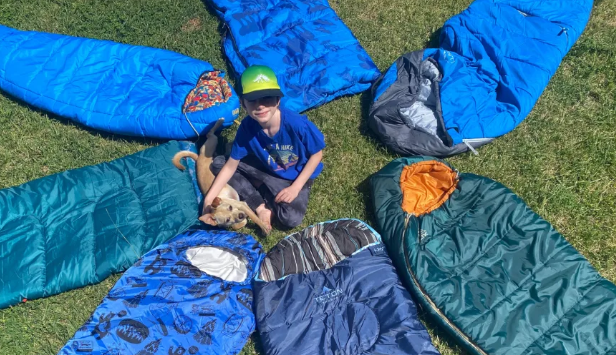
Selecting a quality manufacturer is essential so that the products supplied match your quality and business needs. When buying from Chinese manufacturers, there is a great need to carry out very effective research to get trusted and quality manufacturers.
13.1 How to choose a reliable Chinese manufacturer
Research and Background Check
Ensure that you check on the manufacturer’s background and the times of operating within the market. Long-standing firms tend to be more reliable.
Ensure that the manufacturer you go for specializes in the kind of product that you want to acquire.
Evaluate Capabilities
Check the company’s ability to produce the order volume that you have in mind. Also, ask whether the manufacturer has quality assurance measures in place.
Certifications and Compliance
Check on each credential that the manufacturer claims to have obtained, including IsO certifications and product-specific certifications such as CE and RoHS, among others.
Communication and Support
Determine to which extent the manufacturer communicates urgently and efficiently. They need to open channels of communication to tackle any problems that may arise or facilitate.
Quality and Sample Testing
One of the things to consider before ordering in bulk is to ask for samples. With samples, you can check the standard of the product. One can have samples taken through different outlets to other expert analytical laboratories to ensure that they meet the standard set.
References and Reviews
Search for comments and conversations on the manufacturer and about previous experiences of other customers.
13.2 Importance of Verifying Manufacturer’s Credentials
Preventing Fraud and Miscommunication
Manufacturers can assist in reducing fraud cases and enhance proper communication. Ensure that they are real and credible business organizations.
Ensure that the manufacturer has complied with the law and all regulations. That minimizes cases of legal suits or failure to meet set standards.
Ensuring Quality and Reliability
Verified credentials and ensured that the manufacturer was committed to quality and reliability. Those manufacturers who have acquired certifications and received positive reviews are likely to produce quality products.
Steps to Verify Credentials
Check the license and ensure that the manufacturer is registered with the concerned authorities in China. Try to pay a visit to their manufacturing facility to see them and confirm their capacities.
14. Conclusion
When buying a sleeping bag from a Chinese manufacturer, you must consider the essential factors discussed above to be in a position to find a quality sleeping bag. Ensure you select the right type depending on the activity you intend to undertake.
Select the sleeping bag according to its recommended temperature limit and the type of climate that you are going to face. Select your materials depending on the warmth, weight, and sturdiness that you require for the climate you shall be wearing such clothing.
Taking into account the above-mentioned factors and following the tips, one can buy a good sleeping bag that will satisfy all requisites and guarantee a high level of comfort during the night and other kinds of outdoor activities.
Related Post
Furniture is a must for an office or a home. It is available at varying price points as Read more
Wood is extensively used in making furniture around the world. Wood can be molded in any shape or Read more
In the current market condition, a major portion of the world's consumption depends on China. The product range Read more
Contact Us Get Free Quote!
* Please kindly fill out the form for inquiry
* we will reply to your inquiry within 24hours
